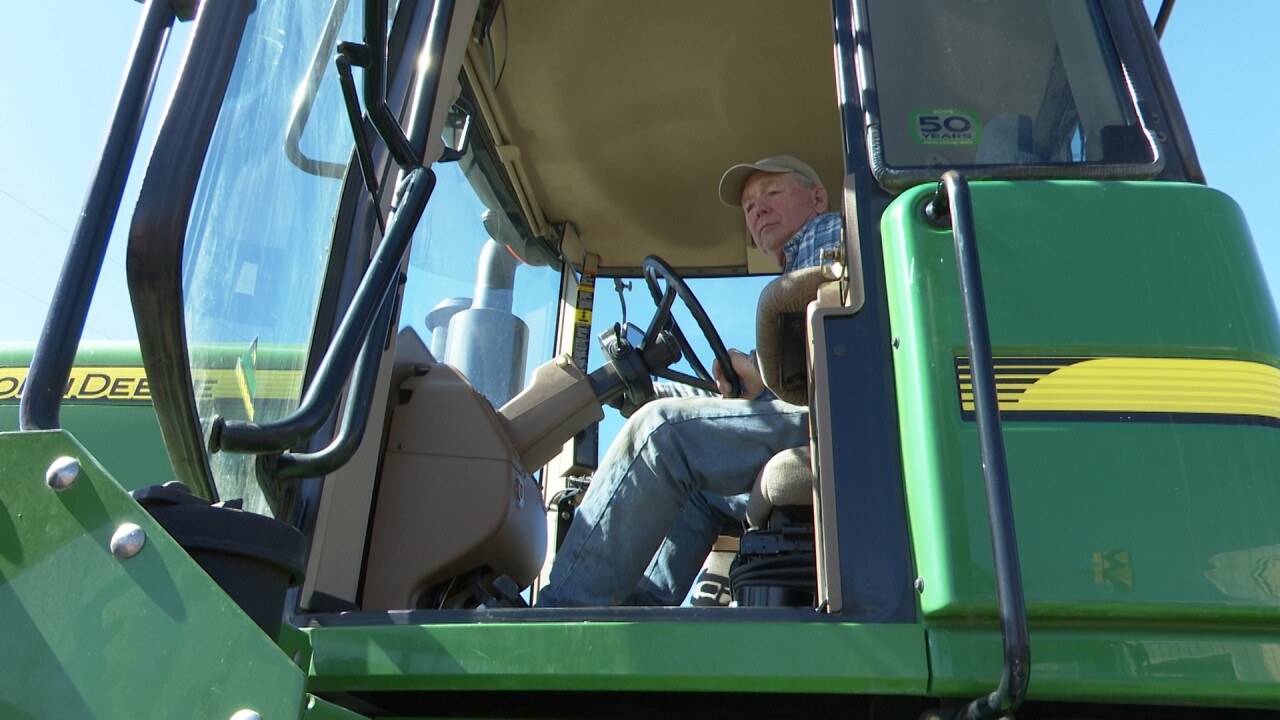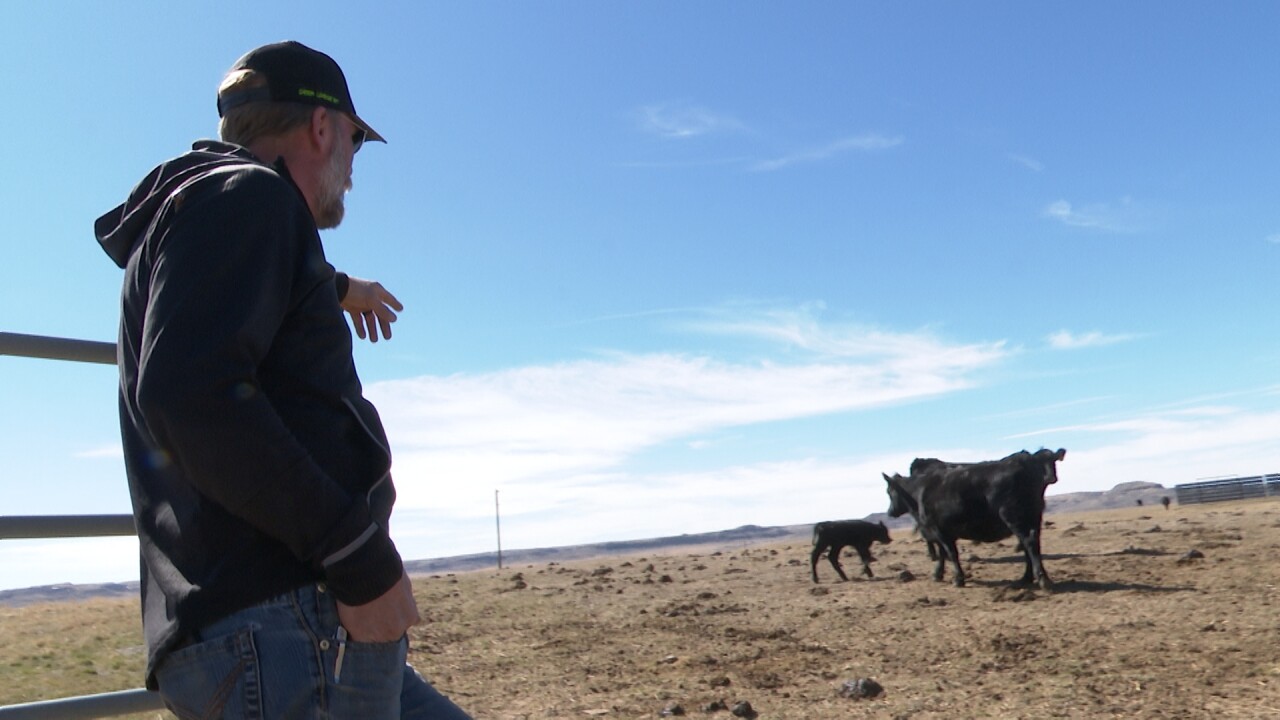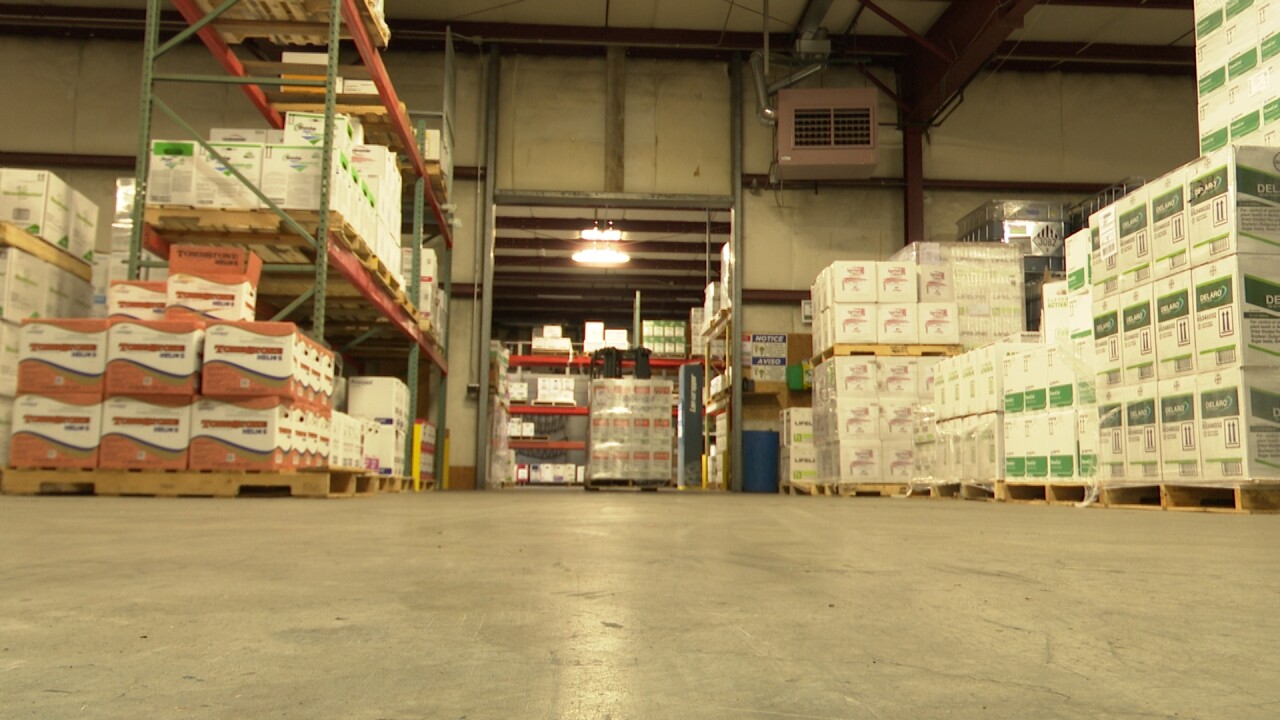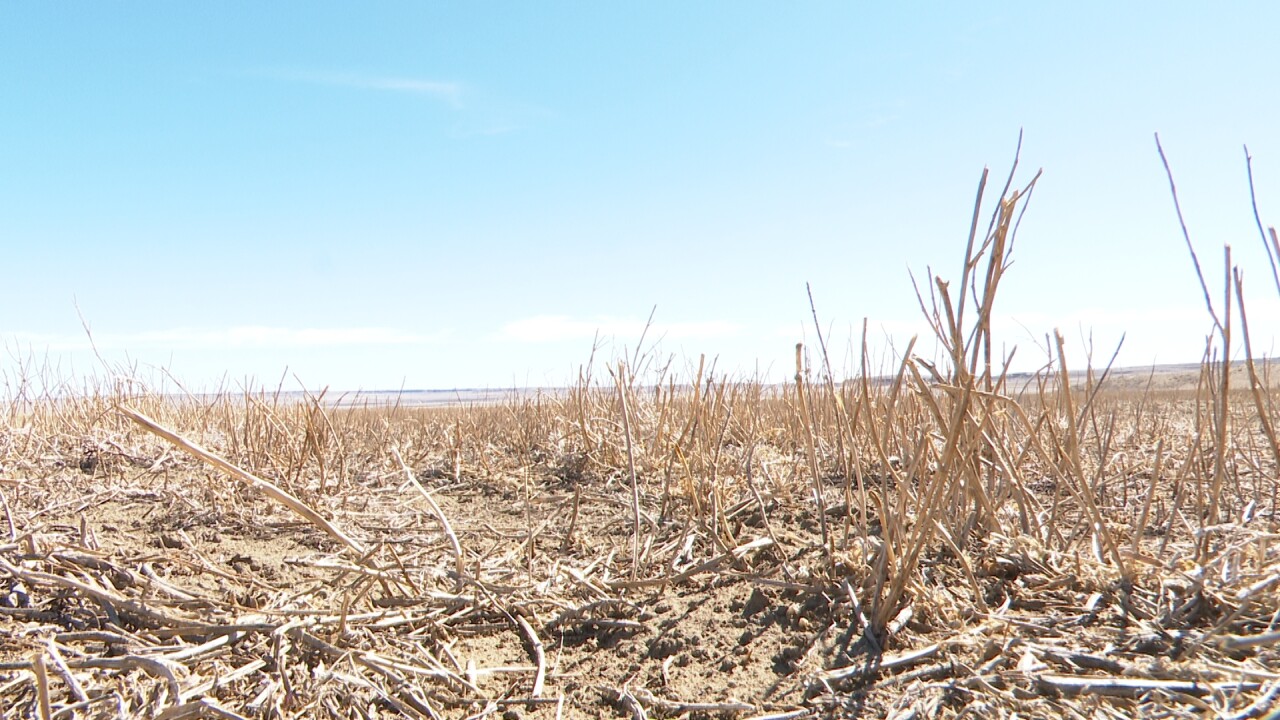BILLINGS — Agriculture is the heartbeat of Montana. Millions of acres of Big Sky country provide the building blocks of life for so many, but so many of those acres are suffering.
Montana is locked in a severe drought. Couple that with continued supply chain issues and the highest fertilizer prices in history, and this industry is facing perhaps its biggest threat ever.
"You always have challenges when you’re farming. Every year is different," said Paul Broyles. "But have I seen one this dry with the price of fertilizer this high? This is a new one."
Broyles has been farming land just north of Rapelje since he was four years old - his dad Gary moved to the area in 1978. The two raise mostly wheat and peas, and they’re good at it. But this year is different.
"Most of farming is a business where you put all the inputs in up front," Gary said. "It's kind of like a high stakes poker game - you have to have it all on the table to begin with."
The stakes are even higher now because those inputs are more expensive than ever.
"I use all liquid fertilizer," Paul said. "The cost right now for that product is $4.50. About 14-15 months ago, the cost per gallon was about $1.62, for the same product."

"Fertilizer prices are beyond anything I’ve ever experienced," added Courtney Herzog.
Herzog is one of the lucky ones in the Rapelje area. He saw the writing on the wall last year and bought his supplies early.
"You had to finance it, pay for it, but at least we knew if we bought it early what the price was going to be and what the availability was going to be," Herzog said.
If a producer waited for the prices to down, not only have they actually gotten higher, but they might not even be able to find fertilizer now - a potential disaster with spring planting season here.
"We saw a big run in fertilizer sales in the last three weeks when the war started in Ukraine," Herzog said, "so a lot of the fertilizer in the area just got slurped up."

Russia is the world’s largest exporter of fertilizer. Much of it is now on hold with heavy trade sanctions and supply chain issues. And that’s not the only product suppliers can’t get.
"I tell the drivers off the dock, it’s a little bit like Christmas every day because you never know what’s under the door," said Nathan Haynie, the manager at Nutrien Ag Solutions in Lockwood. "It's nothing normal that I’ve seen in my 15 year career.
"Guys who are willing to look at different cocktails and recipes, maybe a different application method based on what's available, that has been helpful."
Much of Nathan Haynie’s Nutrient Ag Solutions warehouse is filled with any herbicide they can get their hands on because many planters are expecting another bad grasshopper season after a mild winter.

And that brings us to the biggest issue of all.
"It is so dry, how do we know how to mark it when we’re not sure we can raise it?” Gary asked.
According to the US Drought Monitor, over 80 percent of Montana is in a severe drought and more than half of it, including much of the state’s farm land, falls under the extreme designation. The lack of rain is forcing some difficult decisions.
"We just sold our yearlings," Herzog said. "That’s a decision we made because of moisture. If you can’t grow anything, it doesn’t mean your bills go away."

If rain does show up, grain producers could have a banner year. Wheat prices hit an all-time high in early March at nearly $13 per bushel. That’s because Russia and Ukraine normally export about 30% of the world’s supply, and again, that’s on hold. So while you may pay more for a loaf of bread at local grocery store, that money is more likely to stay home.
"Even with the challenges of high prices and hard-to-find products, we could still overcome all these obstacles with some moisture," Paul said.
"If you could sell wheat at these current prices, you could lock in a profit," Herzog added, "but couple that with no moisture and that's the conundrum."
A problem perhaps unlike any other this industry has ever faced.




